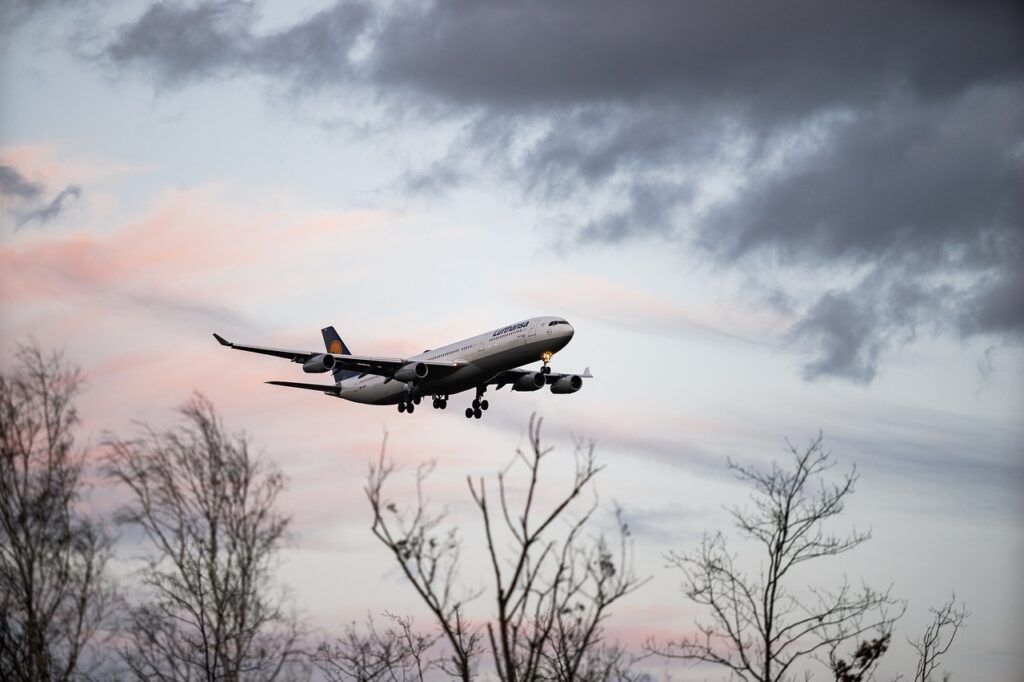A Lufthansa flight to Seville flew without pilot control for 10 minutes after the copilot collapsed alone in the cockpit.
The incident occurred on February 17, 2024, during a flight from Frankfurt to Seville.
The Airbus A321 carried 199 passengers and six crew members, according to Spain’s aviation safety authority CIAIAC.
The captain left the cockpit briefly to use the lavatory. While he was out, the copilot lost consciousness.
Autopilot Kept Plane Stable During Emergency
The plane’s autopilot system kept it flying safely.
However, the unconscious copilot accidentally moved several controls, as confirmed by CIAIAC.
Cockpit audio captured sounds of sudden distress, typical of a medical emergency.
Air traffic controllers called the cockpit three times but received no answer.
Captain Re-Entered Cockpit Using Emergency Code
The captain tried to re-enter the cockpit using the standard code.
He entered the code five times, each time sounding a chime inside the cockpit.
A flight attendant also called the cockpit via the intercom.
Still, there was no response from the copilot.
The captain then used the emergency override code to regain entry.
He returned to the controls and assessed the situation quickly.
Crew and Doctor Gave Immediate Medical Aid
Flight attendants helped the copilot immediately.
A passenger with medical training joined them to provide first aid.
The copilot regained consciousness and could recall being treated.
The captain decided to divert the flight to Adolfo Suárez Madrid–Barajas Airport.
The aircraft landed safely about 20 minutes later.
Emergency staff took the copilot to a hospital in Madrid for observation.
Doctors monitored him for several hours.
Copilot Diagnosed With Undetected Neurological Condition
Doctors diagnosed the copilot with a neurological condition that had not appeared in earlier screenings.
Because of this, aviation authorities suspended his medical license.
CIAIAC described the event as an “extraordinary situation.”
They noted that captains receive training to handle in-flight medical emergencies involving other pilots.
Lufthansa Confirms Incident and Launches Internal Review
Lufthansa confirmed the event and acknowledged CIAIAC’s findings.
The airline’s flight safety team also reviewed the situation internally.
So far, Lufthansa has not released the outcome of its own investigation.
The incident raises questions about pilot health screening procedures.
Experts urge improvements to detect hidden medical issues.
In-Flight Pilot Incidents Are Rare but Real
In-flight pilot emergencies do happen, though not often.
Between 2019 and 2024, European officials recorded 287 cases of pilot incapacitation.
That data comes from a safety database managed by the European Commission.
In the U.S., the FAA recorded 39 cases between 1993 and 1998.
Most incidents involved heart issues or neurological problems.
Safety Protocols Prevented Disaster
This Lufthansa flight showed how training, teamwork, and technology work together to keep passengers safe.
The captain’s quick response and the crew’s medical efforts helped prevent a tragedy.
The case highlights the importance of strong safety procedures and advanced autopilot systems.
As health screenings improve, airlines can reduce the risks of similar events.
